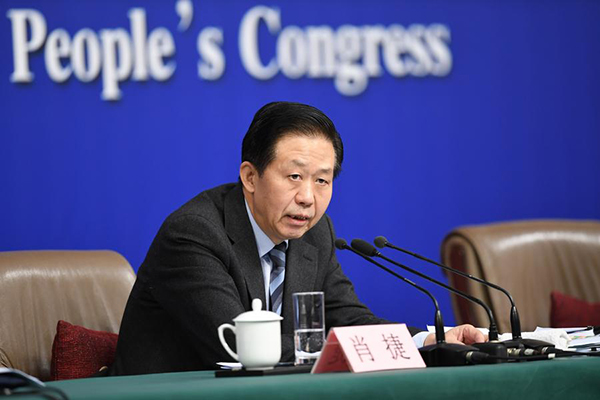
Finance Minister Xiao Jie answers questions at a press conference on reform of fiscal and taxation system and financial work during the first session of the 13th National People’s Congress in Beijing, capital of China, March 7, 2018. [Photo/Xinhua]
BEIJING — The proactive direction of China’s fiscal policy remains the same for 2018 despite a lower deficit-to-GDP ratio target, the finance minister said on March 7.
The government deficit is projected to be 2.38 trillion yuan (about $380 billion), generally the same with last year, while China will increase fiscal expenditure and local government special bonds, Minister Xiao Jie told a press conference.
China lowered its fiscal deficit target to 2.6 percent of GDP for 2018, down by 0.4 percentage points compared with 2017, the first drop since 2013.
The reduction in the deficit-to-GDP ratio is mainly due to steady economic growth and the stable foundation for an increase in revenue, which also keeps policy options open and flexible for macro regulation, Xiao said.
Despite a lower deficit-to-GDP ratio, China has raised the budget for this year’s general public expenditure by 7.6 percent to 21 trillion yuan, higher than a 6.1 percent rise in budget revenue.
Xiao assured that the lower ratio will not affect infrastructure investment, citing a 550 billion yuan increase in local government special bond issuance and a 30 billion yuan rise in central government investment on infrastructure this year.
China will also reduce taxes on businesses and individuals by more than 800 billion yuan and lighten the non-tax burden on market entities by over 300 billion yuan this year, a vital part of the proactive fiscal policy, he said.
Xiao said the fiscal budget will be spent more effectively, with a focus on the country’s “three tough battles,” namely forestalling and defusing major risks, poverty alleviation and pollution control, as well as the supply-side structural reform and improvement of people’s well-being.